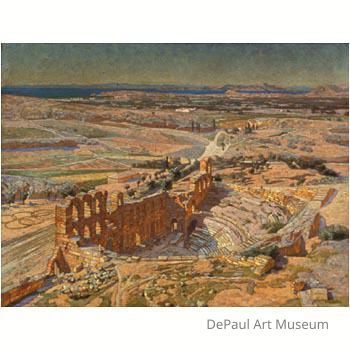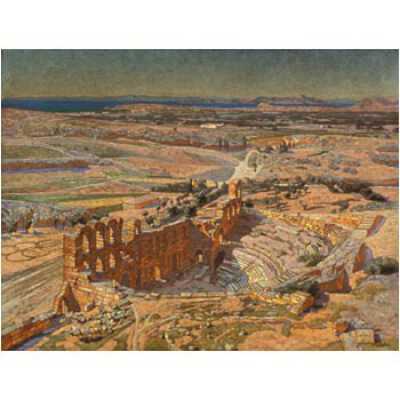From the Parthenon Down to the Sea
Name/Title
From the Parthenon Down to the SeaEntry/Object ID
5004Description
Aerial view of part of the Acropolis of Athens in light, earthy tones. The landscape includes an amphitheater and surrounding land, with the ocean in the far background.Artwork Details
Medium
Oil on CanvasContext
This painting is typical of Dyer’s work, as he is known for European landscape scenes, often of ancient sites. In addition to these outdoor themes, he also painted a series of grand interiors, also set in Europe (where he remained for most of his career).Acquisition
Notes
Collection of DePaul University, Anonymous giftMade/Created
Artist
Dyer, Charles GiffordNotes
Creation Date: late 19th centuryEthnography
Notes
United States American North America, United States ChicagoLexicon
Legacy Lexicon
Class
PAINTINGSDimensions
Dimension Description
WholeWidth
47 inDepth
2-3/4 inLength
38 inExhibitions
Past Present: DePaul Builds An Art Collection
Past Present: DePaul Builds An Art Collection

